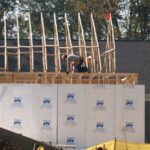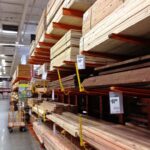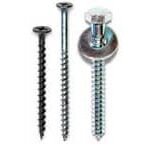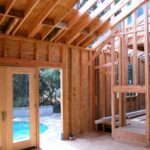Do your walls need a vapor barrier? These are the best preventatives to moisture damage.
- Installing a polyethylene ground cover on the earth floor of houses with crawlspaces, and sloping the ground away from the house’s foundation.
- Installing a continuous vapor barrier—if your climate calls for one—that has a perm rating of less than 1. (See the map and chart at right.)
- Placing a termite shield, sill gaskets, or other vapor-impermeable membrane on the top of the foundation wall. This will prevent moisture from wicking into the framed wall from the concrete foundation wall by capillary action.
Causes of rain leaks through exterior walls include improper installation of the following:
- Siding materials
- Flashing, especially if it is of poor quality
- Weatherstripping or caulking around joints in the structure’s exterior (such as windows, doors, and bottom plates).
Wind-driven rain can also penetrate the exterior finish. To enhance protection against rain penetration, create a drainage plane within the wall system of the home.
Information courtesy of EERE



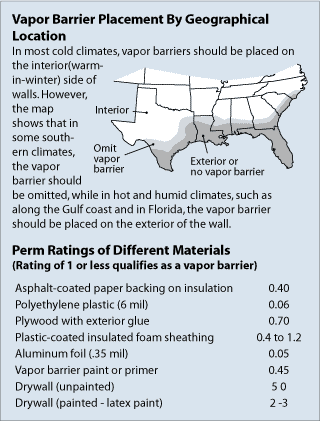

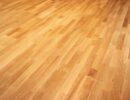
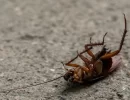

 Don Vandervort writes or edits every article at HomeTips. Don has:
Don Vandervort writes or edits every article at HomeTips. Don has:
